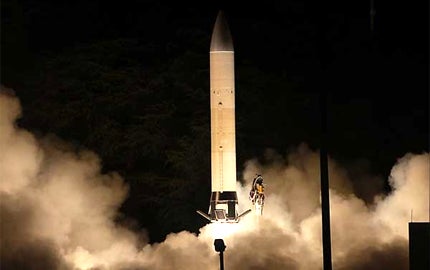- Joined
- Aug 28, 2011
- Messages
- 3,990
- Points
- 63
What advanced? PLA got it 10 years ago, and already making 3 generations further. Dotard want to copy and range still shorter than DF-21 by 100km! Chow Ang Moh Loser Clowns! Will never be able to catch up behind Chinese!
https://mil.news.sina.com.cn/jssd/2018-09-30/doc-ihkmwytq0093337.shtml
美开始仿制中国反舰弹道导弹 可3000公里外击中航母
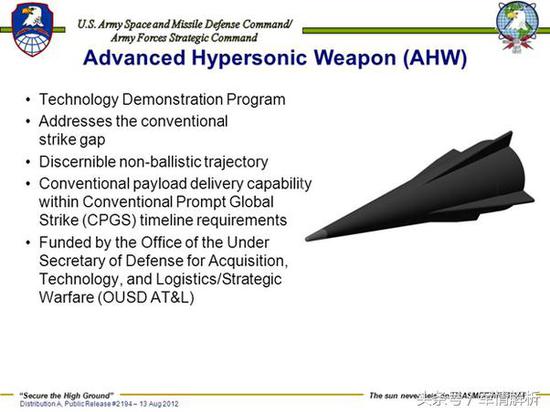 图:美国改进型AHW弹头
图:美国改进型AHW弹头
近日,美国媒体热传所谓“海龙”潜射超音速反舰导弹。可让美国获得不同寻常的打击能力,美国媒体分析称,其可能为多功能平台,可更换防空导弹弹头和特殊打击弹头。
根据当时美国海军学院新闻网发表报道来看,CPS FE-1实验是在夏威夷试验场进行的,导弹是从俄亥俄级巡航导弹核潜艇上发射,俄亥俄级分为弹道导弹核潜艇和巡航导弹核潜艇。报道称这次实验是为了搜集高超声速飞行的数据,为研制中远程快速打击武器积累数据,未来这种导弹也将装在的弗吉尼亚级核潜艇的垂直发射系统里面。
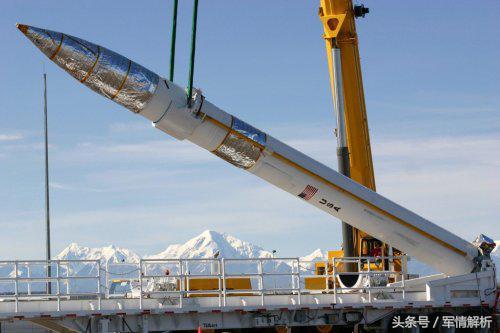 图:这次试验的载体是美国GBI导弹防御系统的火箭助推器
图:这次试验的载体是美国GBI导弹防御系统的火箭助推器
此次试验目的是积累数据为以后发展先进中远程打击武器做准备,最近美国国防部副部长格里芬透露了去年10月美国海军进行的CPS FE-1实验的一些细节,证实了美国正在试验新型反舰导弹。这证明了美国的确在做类似武器的研发。
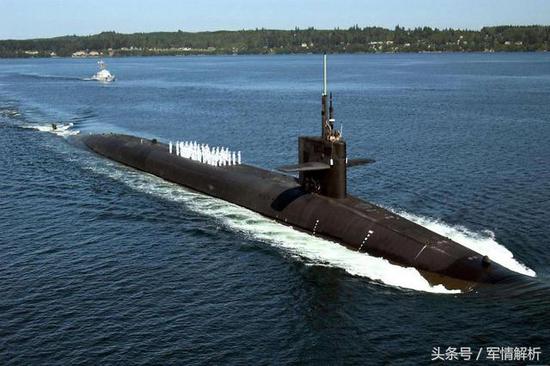 图:美国俄亥俄级导弹核潜艇、其中四艘为巡航导弹核潜艇
图:美国俄亥俄级导弹核潜艇、其中四艘为巡航导弹核潜艇
从披露的信息来看,美国极有可能是在发展类似中国DF21D和DF26A的反舰弹道导弹。AHW改进型的高超音速打击飞行器只有采用弹道导弹攻击模式才能做到,因为其是惯性飞行为主,而美国从俄亥俄级导弹核潜艇上面发射虽然是试验,但是也披露未来会装备在俄亥俄级导弹核潜艇和弗吉尼亚级多功能核潜艇上面,更加大了这种可能性。
美国原本打算用三叉戟导弹作为载体,但是这加重了误判风险,怕被认为是核攻击,因此美国不得不选择新的载体。而美国此次公布的试验测试为中远程范围,美国和前苏联签署过“中程导弹条约”美国此举必然违反条约,俄罗斯虽然不是前苏联但是条约依然有效,美国此举会对俄罗斯造成刺激,俄罗斯也必然会发展中远程弹道导弹武器。
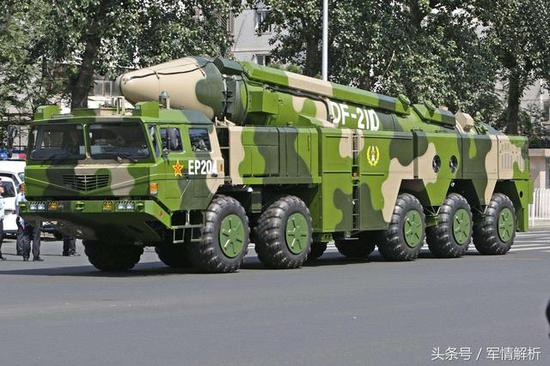 图:中国DF21D反舰弹道导弹
图:中国DF21D反舰弹道导弹
美国此举如此强调反舰功能,针对的目标很清晰,针对于中国军事力量强大,担心美国地区霸权遭受威胁。在中国目前已经有两艘航母并且未来还继续发展航母和拒止打击能力情况下美国这种担忧越来越明显。发展美国版的潜射“DF26”反舰弹道导弹势在必行,根据分析美国发展的海龙潜射高超音速反舰导弹,射程设计是在3000-5000公里,采用类似弹道导弹攻击模式,这和中国的DF26反航母弹道导弹在射程和攻击原理上是差不多的。
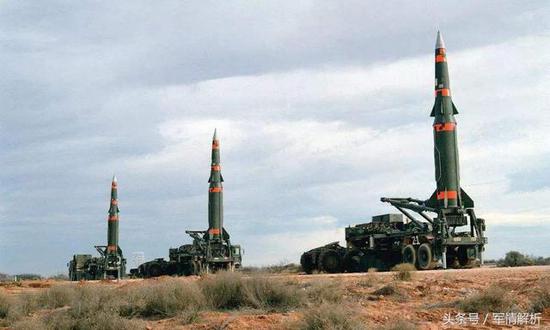 图:美国冷战时期研制的潘兴2弹道导弹
图:美国冷战时期研制的潘兴2弹道导弹
美国曾经在冷战时期研制了接近反舰弹道导弹的潘兴2弹道导弹,但是当年实际使用很难达到真正打击航母的作用,而且因为中导条约潘兴2早已经撤掉,美国要搞新的中程反舰弹道导弹只能重头来。不过要知道中国发展反舰弹道导弹花了20年时间才达到作战要求。这些不仅是大体型环境的建设,还有无数次的试验和测试,这些都需要砸钱和百折不饶的精神才能够完成。现阶段美国不可能在短时间内完成美国版的潜射“DF26”反舰弹道导弹。
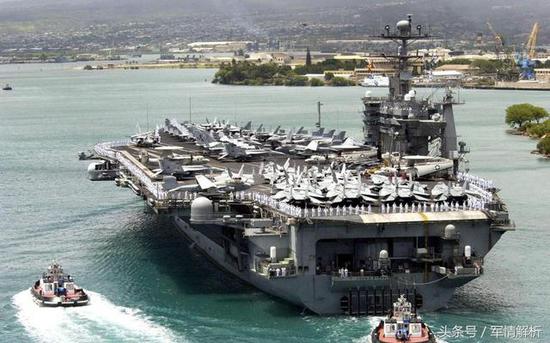 图:航空母舰已经成为大国强大军事力量的象征
图:航空母舰已经成为大国强大军事力量的象征
虽然美国此次试验不如意,但不代表美国会放弃。而美国潜射版“DF26”未来会怎么样,会不会对世界战略格局造成影响,这点都值得世界各国关注。(作者署名:军情解析/浮生若梦)
Https://mil.news.sina.com.cn/jssd/2018-09-30/doc-ihkmwytq0093337.shtml
Https://mil.news.sina.com.cn/jssd/2018-09-30/doc-ihkmwytq0093337.shtml
The United States began to imitate Chinese anti-ship ballistic missiles. It can hit the aircraft carrier 3,000 kilometers away.
Figure: US improved AHW warhead diagram: US improved AHW warhead
Recently, the US media has spread the so-called "Sea Dragon" submarine-launched supersonic anti-ship missile. It can give the United States an unusual ability to strike. The US media analysis said it could be a multi-functional platform with replaceable air defense missile warheads and special strike warheads.
According to a report published by the US Naval Academy News Network at the time, the CPS FE-1 experiment was conducted at the Hawaiian test site. The missile was launched from the Ohio-class cruise missile submarine. The Ohio class was divided into ballistic missile nuclear submarines and cruise missile nuclear submarines. The report said that the experiment was to collect data on hypersonic flight and to accumulate data for the development of medium- and long-range fast-attack weapons. In the future, such missiles will also be installed in the vertical launch system of Virginia-class nuclear submarines.
Figure: The carrier of this test is the rocket booster diagram of the US GBI missile defense system: the carrier of this test is the rocket booster of the US GBI missile defense system.
The purpose of this test is to accumulate data to prepare for the development of advanced medium- and long-range strike weapons. Recently, US Deputy Defense Secretary Griffin revealed some details of the CPS FE-1 experiment conducted by the US Navy in October last year, confirming that the United States is experimenting. New anti-ship missiles. This proves that the United States is indeed doing research and development like weapons.
Figure: US Ohio-class missile submarines, four of which are cruise missile nuclear submarines: US Ohio-class missile submarines, four of which are cruise missile submarines
Judging from the information disclosed, it is highly probable that the United States is developing anti-ship ballistic missiles similar to China's DF21D and DF26A. The AHW modified hypersonic combat aircraft can only be achieved by using the ballistic missile attack mode, because it is mainly inertial flight, while the United States launches from the Ohio-class missile nuclear submarine. Although it is an experiment, it also discloses that it will be equipped with the Ohio-class missile submarine in the future. And the Virginia-class multi-function nuclear submarine is bigger, this possibility is even greater.
The United States originally intended to use the Trident missile as a carrier, but this added to the risk of misjudgment, fearing that it was considered a nuclear attack, so the United States had to choose a new carrier. The test test published by the United States is in the middle and long range. The United States and the former Soviet Union signed the "medium-range missile treaty." The United States will inevitably violate the treaty. Although Russia is not a former Soviet Union, the treaty is still valid. The United States will stimulate Russia. Russia will also inevitably develop medium and long-range ballistic missile weapons.
Photo: China DF21D anti-ship ballistic missile map: China DF21D anti-ship ballistic missile
The U.S. move so emphasized the anti-ship function, and the target is very clear. It is aimed at China’s powerful military power and fears that the hegemony of the US region will be threatened. This concern is becoming more apparent in the United States, where there are already two aircraft carriers in China and the future continues to develop aircraft carriers and resist strike capability. It is imperative to develop the US version of the submarine-launched "DF26" anti-ship ballistic missile. According to the analysis of the US-developed Hailong submarine-launched hypersonic anti-ship missile, the range design is 3000-5000 km, using a similar ballistic missile attack mode. China's DF26 anti-aircraft ballistic missile is similar in terms of range and attack.
Photo: Pan Xing 2 Ballistic Missiles Developed during the Cold War Period of the United States: Pershing 2 Ballistic Missiles Developed during the Cold War Period in the United States
The United States once developed the Pershing 2 ballistic missiles that were close to anti-ship ballistic missiles during the Cold War. However, it was difficult to achieve the real impact on the aircraft carrier in actual use, and because the pilot treaty Pan Xing 2 had already been withdrawn, the United States had to engage in new The medium-range anti-ship ballistic missile can only come back. However, it is necessary to know that it took China 20 years to develop anti-ship ballistic missiles to meet operational requirements. These are not only the construction of a large-scale environment, but also numerous trials and tests, which can be completed with the spirit of money and perseverance. At this stage, the United States cannot complete the US version of the submarine-launched "DF26" anti-ship ballistic missile in a short period of time.
Figure: The aircraft carrier has become a symbol of the powerful military power of the great powers: the aircraft carrier has become a symbol of the powerful military power of the great powers.
Although the US test is not satisfactory, it does not mean that the United States will give up. The future of the US submarine-launched version of "DF26" will affect the world's strategic landscape, which is worthy of attention from all over the world. (Author's signature: military analysis / floating dreams)
https://mil.news.sina.com.cn/jssd/2018-09-30/doc-ihkmwytq0093337.shtml
美开始仿制中国反舰弹道导弹 可3000公里外击中航母

近日,美国媒体热传所谓“海龙”潜射超音速反舰导弹。可让美国获得不同寻常的打击能力,美国媒体分析称,其可能为多功能平台,可更换防空导弹弹头和特殊打击弹头。
根据当时美国海军学院新闻网发表报道来看,CPS FE-1实验是在夏威夷试验场进行的,导弹是从俄亥俄级巡航导弹核潜艇上发射,俄亥俄级分为弹道导弹核潜艇和巡航导弹核潜艇。报道称这次实验是为了搜集高超声速飞行的数据,为研制中远程快速打击武器积累数据,未来这种导弹也将装在的弗吉尼亚级核潜艇的垂直发射系统里面。

此次试验目的是积累数据为以后发展先进中远程打击武器做准备,最近美国国防部副部长格里芬透露了去年10月美国海军进行的CPS FE-1实验的一些细节,证实了美国正在试验新型反舰导弹。这证明了美国的确在做类似武器的研发。

从披露的信息来看,美国极有可能是在发展类似中国DF21D和DF26A的反舰弹道导弹。AHW改进型的高超音速打击飞行器只有采用弹道导弹攻击模式才能做到,因为其是惯性飞行为主,而美国从俄亥俄级导弹核潜艇上面发射虽然是试验,但是也披露未来会装备在俄亥俄级导弹核潜艇和弗吉尼亚级多功能核潜艇上面,更加大了这种可能性。
美国原本打算用三叉戟导弹作为载体,但是这加重了误判风险,怕被认为是核攻击,因此美国不得不选择新的载体。而美国此次公布的试验测试为中远程范围,美国和前苏联签署过“中程导弹条约”美国此举必然违反条约,俄罗斯虽然不是前苏联但是条约依然有效,美国此举会对俄罗斯造成刺激,俄罗斯也必然会发展中远程弹道导弹武器。

美国此举如此强调反舰功能,针对的目标很清晰,针对于中国军事力量强大,担心美国地区霸权遭受威胁。在中国目前已经有两艘航母并且未来还继续发展航母和拒止打击能力情况下美国这种担忧越来越明显。发展美国版的潜射“DF26”反舰弹道导弹势在必行,根据分析美国发展的海龙潜射高超音速反舰导弹,射程设计是在3000-5000公里,采用类似弹道导弹攻击模式,这和中国的DF26反航母弹道导弹在射程和攻击原理上是差不多的。

美国曾经在冷战时期研制了接近反舰弹道导弹的潘兴2弹道导弹,但是当年实际使用很难达到真正打击航母的作用,而且因为中导条约潘兴2早已经撤掉,美国要搞新的中程反舰弹道导弹只能重头来。不过要知道中国发展反舰弹道导弹花了20年时间才达到作战要求。这些不仅是大体型环境的建设,还有无数次的试验和测试,这些都需要砸钱和百折不饶的精神才能够完成。现阶段美国不可能在短时间内完成美国版的潜射“DF26”反舰弹道导弹。

虽然美国此次试验不如意,但不代表美国会放弃。而美国潜射版“DF26”未来会怎么样,会不会对世界战略格局造成影响,这点都值得世界各国关注。(作者署名:军情解析/浮生若梦)
Https://mil.news.sina.com.cn/jssd/2018-09-30/doc-ihkmwytq0093337.shtml
Https://mil.news.sina.com.cn/jssd/2018-09-30/doc-ihkmwytq0093337.shtml
The United States began to imitate Chinese anti-ship ballistic missiles. It can hit the aircraft carrier 3,000 kilometers away.
Figure: US improved AHW warhead diagram: US improved AHW warhead
Recently, the US media has spread the so-called "Sea Dragon" submarine-launched supersonic anti-ship missile. It can give the United States an unusual ability to strike. The US media analysis said it could be a multi-functional platform with replaceable air defense missile warheads and special strike warheads.
According to a report published by the US Naval Academy News Network at the time, the CPS FE-1 experiment was conducted at the Hawaiian test site. The missile was launched from the Ohio-class cruise missile submarine. The Ohio class was divided into ballistic missile nuclear submarines and cruise missile nuclear submarines. The report said that the experiment was to collect data on hypersonic flight and to accumulate data for the development of medium- and long-range fast-attack weapons. In the future, such missiles will also be installed in the vertical launch system of Virginia-class nuclear submarines.
Figure: The carrier of this test is the rocket booster diagram of the US GBI missile defense system: the carrier of this test is the rocket booster of the US GBI missile defense system.
The purpose of this test is to accumulate data to prepare for the development of advanced medium- and long-range strike weapons. Recently, US Deputy Defense Secretary Griffin revealed some details of the CPS FE-1 experiment conducted by the US Navy in October last year, confirming that the United States is experimenting. New anti-ship missiles. This proves that the United States is indeed doing research and development like weapons.
Figure: US Ohio-class missile submarines, four of which are cruise missile nuclear submarines: US Ohio-class missile submarines, four of which are cruise missile submarines
Judging from the information disclosed, it is highly probable that the United States is developing anti-ship ballistic missiles similar to China's DF21D and DF26A. The AHW modified hypersonic combat aircraft can only be achieved by using the ballistic missile attack mode, because it is mainly inertial flight, while the United States launches from the Ohio-class missile nuclear submarine. Although it is an experiment, it also discloses that it will be equipped with the Ohio-class missile submarine in the future. And the Virginia-class multi-function nuclear submarine is bigger, this possibility is even greater.
The United States originally intended to use the Trident missile as a carrier, but this added to the risk of misjudgment, fearing that it was considered a nuclear attack, so the United States had to choose a new carrier. The test test published by the United States is in the middle and long range. The United States and the former Soviet Union signed the "medium-range missile treaty." The United States will inevitably violate the treaty. Although Russia is not a former Soviet Union, the treaty is still valid. The United States will stimulate Russia. Russia will also inevitably develop medium and long-range ballistic missile weapons.
Photo: China DF21D anti-ship ballistic missile map: China DF21D anti-ship ballistic missile
The U.S. move so emphasized the anti-ship function, and the target is very clear. It is aimed at China’s powerful military power and fears that the hegemony of the US region will be threatened. This concern is becoming more apparent in the United States, where there are already two aircraft carriers in China and the future continues to develop aircraft carriers and resist strike capability. It is imperative to develop the US version of the submarine-launched "DF26" anti-ship ballistic missile. According to the analysis of the US-developed Hailong submarine-launched hypersonic anti-ship missile, the range design is 3000-5000 km, using a similar ballistic missile attack mode. China's DF26 anti-aircraft ballistic missile is similar in terms of range and attack.
Photo: Pan Xing 2 Ballistic Missiles Developed during the Cold War Period of the United States: Pershing 2 Ballistic Missiles Developed during the Cold War Period in the United States
The United States once developed the Pershing 2 ballistic missiles that were close to anti-ship ballistic missiles during the Cold War. However, it was difficult to achieve the real impact on the aircraft carrier in actual use, and because the pilot treaty Pan Xing 2 had already been withdrawn, the United States had to engage in new The medium-range anti-ship ballistic missile can only come back. However, it is necessary to know that it took China 20 years to develop anti-ship ballistic missiles to meet operational requirements. These are not only the construction of a large-scale environment, but also numerous trials and tests, which can be completed with the spirit of money and perseverance. At this stage, the United States cannot complete the US version of the submarine-launched "DF26" anti-ship ballistic missile in a short period of time.
Figure: The aircraft carrier has become a symbol of the powerful military power of the great powers: the aircraft carrier has become a symbol of the powerful military power of the great powers.
Although the US test is not satisfactory, it does not mean that the United States will give up. The future of the US submarine-launched version of "DF26" will affect the world's strategic landscape, which is worthy of attention from all over the world. (Author's signature: military analysis / floating dreams)

